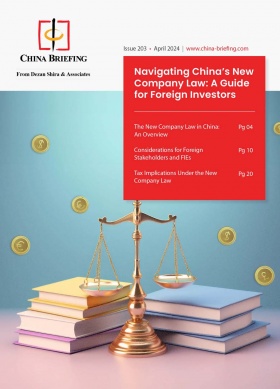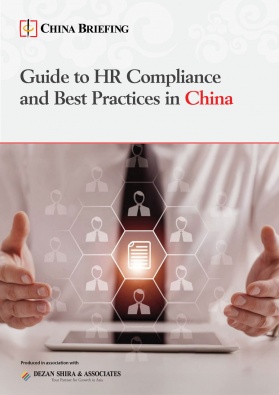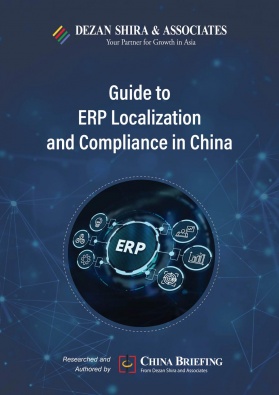China’s Industry Clusters – A Comprehensive Overview
China’s industry clusters are key drivers of its economic growth and global competitiveness. These geographically concentrated hubs, such as the tech center in Shenzhen and manufacturing zones in the Pearl River Delta, foster innovation and efficiency by bringing interconnected businesses together.
China’s industry clusters, benefitting from a combination of government support, strong infrastructure, and a skilled workforce, are core to China’s market competitiveness, technological innovation, and economic growth. As China evolves economically, these clusters continue to be magnets for investment, playing a vital role in sustaining growth and solidifying its global economic and industrial standing.
In this article, we provide an overview of China’s key industry clusters for prominent sectors, such as electronics manufacturing, new energy, high-end technology, and textiles.
Overview of China’s industry clusters
Industry clusters in China are characterized by a geographic concentration of businesses and industries densely located in specific regions, fostering collaboration and competition. These clusters typically focus on specialized sectors, such as electronics, textiles, automotive manufacturing, or aviation, among many others. The proximity of these businesses allows for efficient supply chain integration, reducing costs and improving responsiveness.
Additionally, clusters often benefit from shared infrastructure, including transportation networks, utilities, and communication systems, which support their operations. The concentration of similar industries within a cluster promotes the exchange of knowledge and innovation. Local and national governments frequently also provide support through policies, funding, and infrastructure development, bolstering the growth and sustainability of these clusters.
A significant advantage of industry clusters is their ability to attract and cultivate talent, often in partnership with local universities that specialize in the same industries. These educational institutions provide a steady stream of skilled graduates and frequently collaborate on R&D projects, further enhancing the cluster’s innovation capabilities.
There are over 2,000 industry clusters in China, the majority located in economic hubs in the eastern and central provinces. The distribution of different industrial sectors across the country is in many cases linked to each region’s local advantages, including natural resources, traditional industries, labor force, and production costs. However, with the emergence of new technology and advanced manufacturing industries and concerted efforts from the central and local governments, western and northern provinces have begun to cultivate new industry clusters focused on modern sectors.
The map below shows some major industry clusters and focus industries in each province. Click or search the province to view industry clusters and industries.
Electronics and telecommunications
China’s electronics and telecommunications industry sectors are still overwhelmingly concentrated in the sector’s traditional home of the Pearl River Delta, in cities such as Shenzhen and Guangzhou.
Guangdong’s electronics and telecom industry is a cornerstone of the province’s economy, contributing RMB 4.67 trillion (US$642.25 billion) in revenue in 2022, which accounts for 26 percent of the province’s industrial revenue, according to the Guangdong Department of Industry and Information Technology. The industry is concentrated along the eastern bank of the Pearl River, with significant strengths in smart terminals, information communication, and integrated circuit (IC) design.
However, other areas of China have developed important industry clusters focusing on different aspects of electronics and telecom production and manufacturing. The Yangtze River Delta, for instance, has a strong industrial base for manufacturing laptops, semiconductors, and mobile phones, with Shanghai serving as a hub for renowned IT companies. The Bohai Economic Rim around Tianjin specializes in communications, software, and home appliances, with Beijing as a major R&D and distribution center. Additionally, cities like Chengdu, Xi’an, and Wuhan primarily produce home appliances and military electronics.
In Anhui, the electronics and telecom industry is now the second-largest industrial sector and the primary driver of industrial growth in the province. Anhui boasts a complete flat panel display industry chain, contributing approximately 10 percent of global production capacity, and is recognized as a leading IC industry cluster with comprehensive capabilities from design to testing. The photovoltaic industry has seen substantial growth, with revenues soaring from RMB 26.8 billion (US$3.7 billion) in 2012 to RMB 882.8 billion (US$121.4 billion) in 2021, according to the National Development and Reform Commission (NDRC).
Meanwhile, Chongqing has emerged as one of China’s western electronics and telecommunications hubs, benefiting from the government’s efforts to move high-tech industries westwards. According to the Chongqing municipal government, in 2022, the municipality’s electronics and telecom manufacturing output exceeded RMB 700 billion (US$96.3 billion), with a diversified industry structure encompassing smart terminals, ICs, and instruments. The city hosts over 800 large-scale manufacturing enterprises, including giants like China Resources, CETC, Ifar Semiconductor, and SK Hynix in the IC sector.
Chongqing also plans to enhance its industry clusters around new display technology, new energy, advanced energy storage, and ICs to establish a world-class trillion-yuan industry cluster. Additionally, various districts in Chongqing, such as the Western (Chongqing) Science City and Liangjiang New Area, are actively positioning themselves as major hubs for electronics and telecoms manufacturing, focusing on ICs and intelligent terminals.
Semiconductors and ICs
China’s IC industry is currently mainly driven by industry clusters located in Beijing, the Yangtze River Delta (covering Shanghai, Jiangsu, Zhejiang, and Anhui), and Guangdong. However, central and western regions, including cities like Wuhan, Xi’an, and Chengdu, are rapidly developing IC and semiconductor industries.
According to the electronics and manufacturing trade fair NEPCON, the Yangtze River Delta is home to over half of China’s developed IC cities, which include Shanghai, Nanjing, Suzhou, Wuxi, and Hefei. Benefiting from a strategic location and policy support, this region’s IC manufacturing and testing exceed 50 percent nationally, with vast potential across the entire IC industry chain from design to materials.
Meanwhile, the Beijing-Tianjin-Hebei region excels in IC design and manufacturing, centered in Beijing with a robust university presence and high-end design parks.
The Pearl River Delta, which includes nine cities in southern Guangdong, leads in IC design, notably in Shenzhen and Zhuhai. Shenzhen alone accounted for 88 percent of Guangdong’s IC and semiconductor revenue in 2020, solidifying its role in China’s information industry.
The central and western regions are establishing distinct IC clusters, focusing on wide-bandgap and automotive-grade semiconductors. Cities like Xi’an and Wuhan are targeting semiconductor memory industry development, bolstering regional growth.
Biopharmaceuticals
China’s biopharma industry has flourished over the last decade as part of China’s efforts to upgrade its economy to focus on high-end technology and advanced industries. The biopharma market size is expected to grow from RMB 345.7 billion (US$47.60 billion) in 2020 to RMB 811.6 billion (US$111.76 billion) in 2025, a 135 percent increase in five years.
China’s biopharma industry clusters are generally located within national high-tech development zones or economic development zones, but there are also a number of independently established biopharma parks across the country.
Geographically, these clusters are predominantly found in regions such as the Yangtze River Delta, the Bohai Economic Rim, the Pearl River Delta, and rapidly developing areas in Northeast China. Central provinces like Henan, Hunan, and Hubei, as well as western provinces like Sichuan and Chongqing, are also home to growing biopharma clusters. The Chinese government has actively supported the development of these clusters through strategic plans and policies, such as the 14th Five-Year Plan for Bioeconomy Development, emphasizing the integration of biotechnology and IT.
In China, regional industry clusters in biopharmaceuticals and healthcare highlight distinct strengths and contributions to the national landscape. Guangdong stands out with advanced developments across biologics, chemical drugs, medical devices, and healthcare services. Key hubs like Guangzhou International Biotech Island and Shenzhen Pingshan National Biotech Industrial Base foster innovation supported by major research institutions and universities.
Shanghai’s biopharma industry is concentrated in the Zhangjiang Science City in Pudong District, a nucleus for life sciences R&D and operational spaces. The Shanghai Zhangjiang Medical Equipment Industrial Base and International Medical City specialize in medical equipment and cell gene industries, supporting an ecosystem of advanced medical institutions and enterprises.
Meanwhile, the southwestern province of Yunnan has seen significant growth in biopharmaceutical revenue, driven by high-tech zones in Kunming and Yuxi focusing on vaccines, traditional Chinese medicine, and functional cosmetics, attracting major companies to the region.
Northeastern Liaoning is developing a robust biopharmaceutical cluster in Shenyang, leveraging advanced manufacturing and R&D capabilities in biotechnologies, drugs, and medical devices, supported by comprehensive industrial zones.
Finally, Hebei’s collaboration in the Jing-Jin-Ji region (Beijing, Tianjin, and Hebei) is centered on the Cangzhou Bohai New Area Biopharmaceuticals Industrial Park, emphasizing a broad range of therapies from cardiovascular to metabolic treatments, supported by extensive projects from leading pharmaceutical companies.
Textiles, clothing, and footwear
China’s textile industry is significant in the nation’s manufacturing sector, contributing substantially to foreign trade, employment, and urban development. The industry is particularly prominent in Jiangsu, a province with a comprehensive textile supply chain and numerous leading enterprises.
Jiangsu’s textile industry is a cornerstone of the province’s economy, with a comprehensive supply chain and strong presence in chemical fibers, branded clothing, home textiles, and industrial textiles. In 2021, the province’s textile clusters generated RMB 939.2 billion (US$129.2 billion) in revenue, accounting for 18 percent of the national total, according to the official provincial Party committee paper. Jiangsu also leads the nation in the chemical fibers sector, producing 25 percent of the country’s total revenue from this industry, and is home to major innovation centers and leading companies like Hengli Fiber and Shenghong Technology. The home textiles sector in Jiangsu, particularly in Nantong, is globally significant, accounting for over 50 percent of the national market and supplying more than 60 percent of the global market.
Neighboring Zhejiang is another key hub for China’s textile industry. Keqiao, a district of Shaoxing, has established a comprehensive industrial system with a complete supply chain from upstream raw materials to downstream products and markets. The region hosts the China Textile City, the largest textile distribution center in Asia, and has implemented green and high-end development strategies. Keqiao’s focus on digital transformation and innovation has positioned it as a global fashion innovation hub.
In Guangdong, the textile industry is characterized by specialized, large-scale, and industrialized clusters, mainly in the Pearl River Delta and eastern regions. Guangdong’s clusters are notable for producing high-end garments and having a high degree of export orientation. Key areas include Shenzhen for women’s fashion, Huizhou for men’s wear, and various towns known for specific products like jeans, knitwear, and household textiles. These clusters have benefited from international orders and technological advancements, making Guangdong a major player in the global textile market.
Automobile manufacturing
China’s automotive industry has developed into six major clusters, each with distinct characteristics and advantages. The Northeast cluster, centered in Changchun, is home to traditional giants like FAW Group and Brilliance Auto, benefiting from a deep-rooted industrial base. The West cluster, anchored in Chongqing, is dominated by Changan Automobile and leverages the region’s heavy industry strengths. In contrast, the Yangtze River Delta focuses heavily on new energy vehicles (NEVs), with leading companies such as SAIC Motor and Geely.
The Pearl River Delta cluster in Guangdong, including cities like Guangzhou, Shenzhen, and Dongguan, features a diverse mix of Japanese, European, and domestic brands, supported by a comprehensive supply chain for both vehicles and components. This region is noted for its rapid development in intelligent and connected vehicles, with key players like GAC Group and BYD driving innovation. The Beijing-Tianjin-Hebei cluster and the Central China cluster, with hubs in Wuhan and other cities, also contribute significantly to the national automotive landscape. These clusters not only enhance the competitiveness of China’s automotive industry but also highlight the regional specialization and integrated development within the sector.
Electric vehicles
China’s electric vehicle (EV) sector, also called NEVs, has undergone a boom over the last decade, with the country now leading the world in the production of vehicles, components, and raw materials. Four major industrial centers for the production of EVs and its components have emerged: the Yangtze River Delta, the Greater Bay Area, the Beijing-Tianjin-Hebei region, and the “West Triangle Economic Zone” covering Chengdu, Chongqing, and Xi’an.
According to the 2022 China New Energy Vehicle Industry Development Insight Report, the Beijing-Tianjin-Hebei cluster hosts 91 key NEV enterprises, with a strong presence in drive motor control and lithium battery sectors, and substantial investments in passenger vehicle production bases primarily in Beijing and Tianjin. The Yangtze River Delta boasts 424 key NEV enterprises, prominently featuring a comprehensive supply chain across multiple cities like Shanghai, Suzhou, and Hefei, with Shanghai leading in vehicle production and Suzhou in component supply.
Meanwhile, the Greater Bay Area is home to 119 key NEV companies concentrated mainly in Guangzhou and Shenzhen, where Guangzhou leads in complete NEV ecosystems. Finally, the Western Triangle comprises 74 key NEV enterprises, with significant vehicle production in Chongqing and Chengdu, although Xi’an’s industry scale remains smaller by comparison.
New and renewable energy
China’s new energy industry clusters exhibit significant regional variation, reflecting diverse strengths and focus across different areas. According to the 2023 Hurun China New Energy Cities report, which evaluated the concentration of high-quality new energy enterprises, small and medium-sized enterprises (SMEs), and investment intensity, the top cities demonstrate varied approaches and specializations within the sector.
Eastern China, particularly Beijing, Shanghai, Guangdong, Zhejiang, and Jiangsu, has been at the forefront of new energy development, driven by ambitious targets outlined in their respective “14th Five-Year Plans.” These regions have leveraged their advanced technological capabilities and robust industrial bases to lead in solar and wind energy projects. For instance, photovoltaic (PV) and wind power generation in these provinces has seen significant growth, with Jiangsu and Zhejiang becoming central hubs for PV manufacturing and deployment.
The northeastern region, led by cities like Changchun and Shenyang, has focused heavily on wind energy due to its favorable geographic conditions. These areas benefit from strong wind resources and have established significant wind power bases, contributing to China’s overall wind energy output. This focus on wind energy aligns with the broader regional strategy to capitalize on natural advantages and promote sustainable energy sources.
In the northwest, Xinjiang stands out for its large-scale renewable energy projects. The region has established substantial clean energy bases, including significant solar and wind installations. Xinjiang’s vast land area and high solar insolation levels make it an ideal location for these large-scale projects, which are crucial for both local economic development and national energy security.
Wind energy
China’s wind energy industry is characterized by regional clusters with distinctive features and focuses. In Guangxi, the first offshore wind power project in Fangchenggang is expected to drive over RMB 200 billion (US$27.5 billion) in investment, establishing a substantial offshore wind power base in the Beibu Gulf area. Guangxi’s free trade zone in the Qinzhou port area hosts a comprehensive wind power equipment manufacturing chain, producing large wind turbine blades for domestic and Southeast Asian markets.
Inner Mongolia, a key energy base in China, boasts over half of the nation’s wind resources. The region plans to add significant new wind power installations, with a focus on the city of Baotou, which aims to establish itself as a leading wind power equipment manufacturing hub. The region hosts numerous companies along the wind power industry chain, supported by favorable policies and substantial resource endowments.
Other notable regions include Zhejiang, Fujian, Guangdong, and Hainan, where local governments are fostering wind power equipment manufacturing clusters. For instance, Yancheng’s Dafeng Wind Power Industrial Park has attracted leading enterprises and formed a complete industry chain from R&D to manufacturing and maintenance. Similarly, in Nantong, a significant wind power equipment base has been established, enhancing the city’s industry chain and lifecycle capabilities.
In East China’s Shandong province, Dongying’s offshore wind power equipment industrial park focuses on the manufacturing of core components and has rapidly developed a comprehensive industry chain. Yantai and Weihai are also developing extensive wind power manufacturing bases, leveraging strategic partnerships and investments to grow the industry. In Guangdong, cities like Yangjiang and Shantou are investing heavily in high-end wind power equipment manufacturing, attracting major industry players and forming extensive industry clusters.
Choosing the right investment destination in China
China’s industry clusters offer strategic advantages to businesses seeking innovation, efficiency, and market access. As China continues to advance, navigating these clusters effectively becomes increasingly crucial for businesses aiming to capitalize on localized strengths and optimize operational efficiencies.
Our Location Analysis and Site Selection services help businesses pinpoint optimal investment locations by profiling special economic zones, providing on-the-ground support for site visits, and evaluating cross-regional cost differentials. For more information, please contact China@dezshira.com.
About Us
China Briefing is one of five regional Asia Briefing publications, supported by Dezan Shira & Associates. For a complimentary subscription to China Briefing’s content products, please click here.
Dezan Shira & Associates assists foreign investors into China and has done so since 1992 through offices in Beijing, Tianjin, Dalian, Qingdao, Shanghai, Hangzhou, Ningbo, Suzhou, Guangzhou, Haikou, Zhongshan, Shenzhen, and Hong Kong. We also have offices in Vietnam, Indonesia, Singapore, United States, Germany, Italy, India, and Dubai (UAE) and partner firms assisting foreign investors in The Philippines, Malaysia, Thailand, Bangladesh, and Australia. For assistance in China, please contact the firm at china@dezshira.com or visit our website at www.dezshira.com.
- Previous Article China Offers 5-Year Mainland Travel Permit to Non-Chinese Hong Kong and Macao Permanent Residents
- Next Article China Monthly Tax Brief: June 2024









